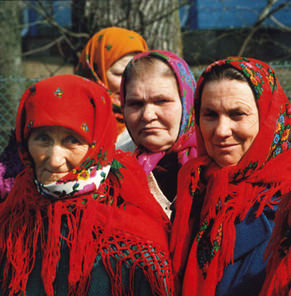Dernières publications
The Human Dimension of Remediation after a Nuclear Accident: From Experience to ICRP Recommendations
- Détails
- Catégorie : Communications
- Publication : jeudi 31 janvier 2013 11:53
LOCHARD J.
Living in a contaminated environment after a nuclear accident is a complex situation generating a lot of questions and concerns among the affected population. The radioactive contamination is a worrying presence for which there are no words in the common language. All dimensions of daily life are
Oral presentation at the International Experts' Meeting on Decommissioning and Remediation after a Nuclear Accident, Vienna, Austria, 28 January-1 February 2013.
Abstract
Living in a contaminated environment after a nuclear accident is a complex situation generating a lot of questions and concerns among the affected population. The radioactive contamination is a worrying presence for which there are no words in the common language. All dimensions of daily life are affected and there is a strong uncertainty about the future and particularly the health of children. For each individual, the presence of radioactivity modifies her/his relationship to risk, to other people, to the territory. There is a general feeling among the population of loss of control on daily life, helplessness, abandonment or even exclusion. Such situation cannot be managed with radiation protection considerations alone, and must address all relevant dimensions: health, environmental, economic, social, psychological, cultural, ethical, political, etc.
As far as radiation exposures are concern they are mainly driven by individual behaviours. As a consequence, beyond actions implemented by authorities at the national and local levels, protection strategies to be effective, must also rely on the protective actions that can be undertaken by the affected people themselves. To participate to their own protection, inhabitants from the affected areas must understand where, when and how they are exposed and what can they do to protect themselves in order to regain control on the situation, to become actors of their own protection and to participate actively in the rehabilitation process. It is the responsibility of authorities to provide the conditions and means to maintain an effective radiation monitoring locally, to continuously disseminate detailed information on the exposure situation and the different ways to reduce doses among the population, and to establish an educational program for young people.
Past experience has demonstrated that the involvement of local professionals and inhabitants in the definition and implementation of protection strategies is a key factor to develop a practical radiation protection culture and expertise within the local communities, and to ensure the effectiveness and sustainability of rehabilitation programs. It also showed that the establishment of forums for dialogue and the pluralism of sources of measurement, are important for the dissemination of information and the development of a common language between all involved stakeholders (by public and private, local, regional and national actors) and essential for ensuring public confidence in the progress of the rehabilitation.
The International Commission on Radiological Protection has developed recommendations for the protection of people living in long term contaminated territories that not only include the scientific and technical feedback experience with the management of nuclear accidents but also their human dimensions.
A1166

 Le Centre d’étude sur l’Évaluation de la Protection dans le domaine Nucléaire (CEPN) est une association à but non lucratif, fondée en 1976, pour évaluer la protection de l’Homme contre les dangers des rayonnements ionisants, sous ses aspects techniques, sanitaires, économiques et sociaux.
Le Centre d’étude sur l’Évaluation de la Protection dans le domaine Nucléaire (CEPN) est une association à but non lucratif, fondée en 1976, pour évaluer la protection de l’Homme contre les dangers des rayonnements ionisants, sous ses aspects techniques, sanitaires, économiques et sociaux.

